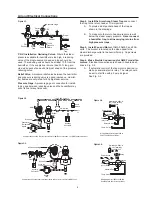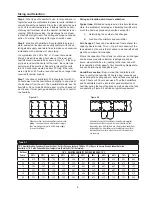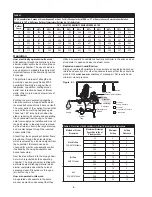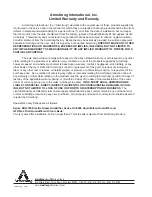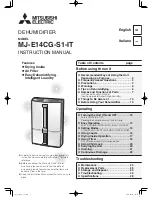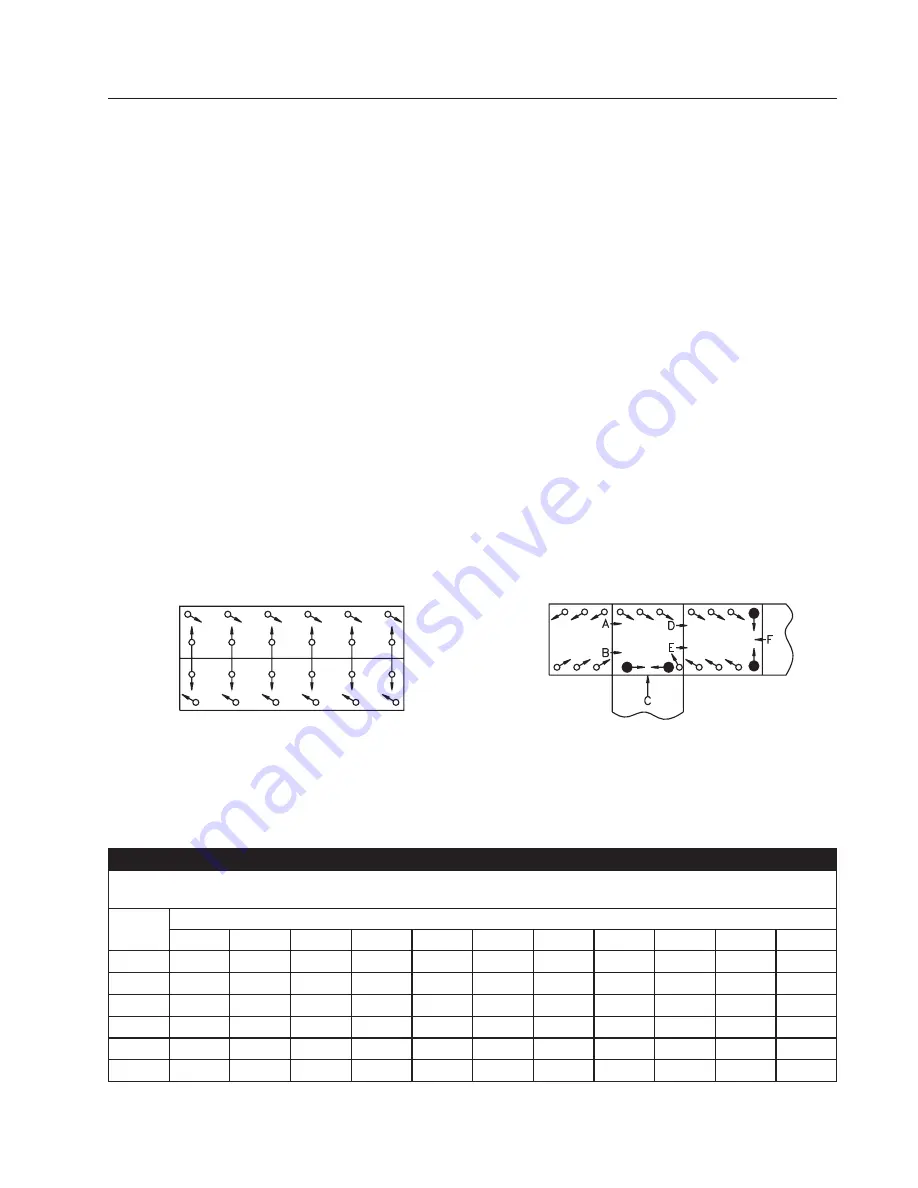
5
Step 5:
What type of humidi
fi
er to use. In this example, in-
tegral fan units are preferable to steam jet units installed in
conjunction with unit heaters. Since the unit heater fans are
on or off to control temperature, it follows that the humidi-
stat may call for steam when the nearest unit heater is nor
running. With the low ceiling, the discharge from a steam
jet humidi
fi
er might rise to the ceiling and produce conden-
sation. Therefore, the integral fan type should be used.
Step 6
: Location of humidi
fi
ers. Several patterns are pos-
sible, and actual location can usually conform with the ex-
isting steam supply and return lines to make an economical
installation with a minimum of new piping.
In our problem of a 400’ x 160’ x 10’ room, there would
likely be steam lines along both sides of the room, and
humidi
fi
ers can be located as shown in Fig. 5-1. If the sup-
ply lines run down the center of the room, the center line
pattern would be practical. Runouts to integral fan units
in a 160’ wide room would be about 20’ long. If the room
were only 60 or 80 ft. wide, runouts need be no longer than
required for actual hook-up.
Step 7:
Location of humidistat. This should be form 20 to
30 feet away from the humidi
fi
er and slightly to one side of
the air stream from the unit. The humidistat should “see” its
humidi
fi
er. Do not hide it behind a post or in the channel of
an H-beam. It must get a good sample of the air, to control
the humidity.
Sizing and location with forced ventilation.
Typical jobs:
Mill and sanding rooms in furniture factories.
Here, the problem of selecting and installing humidi
fi
ers is
much the same as previously described except for:
A. Determining the number of air changes.
B. Location of humidi
fi
ers and humidistat.
Air Changes:
These can be determined from exhaust fan
capacity where known. The cu. ft. per hour capacity of the
fans divided by the cubic feet of space to be humidi
fi
ed will
give the number of air changes.
Where the capacity of fan or fans is not known, air changes
can be measured with velometer readings at all open
doors, elevator shafts, etc., leading to the room and with
fans operating at full capacity. Your Armstrong Representa-
tive can determine air changes for you.
Humidifi er Location:
Bear in mind that humidi
fi
ers will
have to control the humidity 24 hours a day, seven days a
week during the heating season. Exhaust fans may operate
only 40 hours or 80 hours per week. Thus the humidi
fi
ers
and humidistats must be located for good distribution of
humidity during the fan-off periods as well as when the fans
are operating. Figure 5-2 outlines a typical requirement.
Sizing and Selection
Figure 5-1.
Figure 5-2.
Where practical, locate humidifiers to minimize
piping. Locations shown where steam supply
lines are along outer walls; and where supply
is in center of room.
Schematic layout of humidifiers in woodworking plant
where exhaust fans are used. Arrows indicate air flow
induced by fans. Humidifiers are sized for load conditions
imposed by fan. Humidifiers are located to give uniform
distribution of humidity when fans are off or when fans
are running.
Table 5-1
70°F. Humidifi cation. Pounds of Steam Per Hour, Per Air Chcange for Each 1000 cu. FT. of Space to Secure Desired Indoor Relative
Humidity at 70°F. with Various Outdoor Temperature (Outside Air 75% Saturated).
Outdoor
Temp.
70°F. - RELATIVE HUMIDITY DESIRED INDOORS-70°F
25%
30%
35%
40%
45%
50%
55%
60%
65%
70%
75%
30
.079
.136
.194
.251
.309
.367
.424
.482
.539
.597
.654
20
.154
.212
.269
.327
.385
.441
.499
.557
.615
.672
.730
10
.204
.262
.319
.377
.434
.492
.549
.607
.665
.722
.780
0
.237
.294
.352
.409
.467
.524
.582
.639
.697
.754
.812
-10
.257
.314
.372
.430
.487
.545
.602
.660
.717
.775
.832
-20
.270
.327
.385
.442
.500
.557
.615
.672
.730
.787
.844



